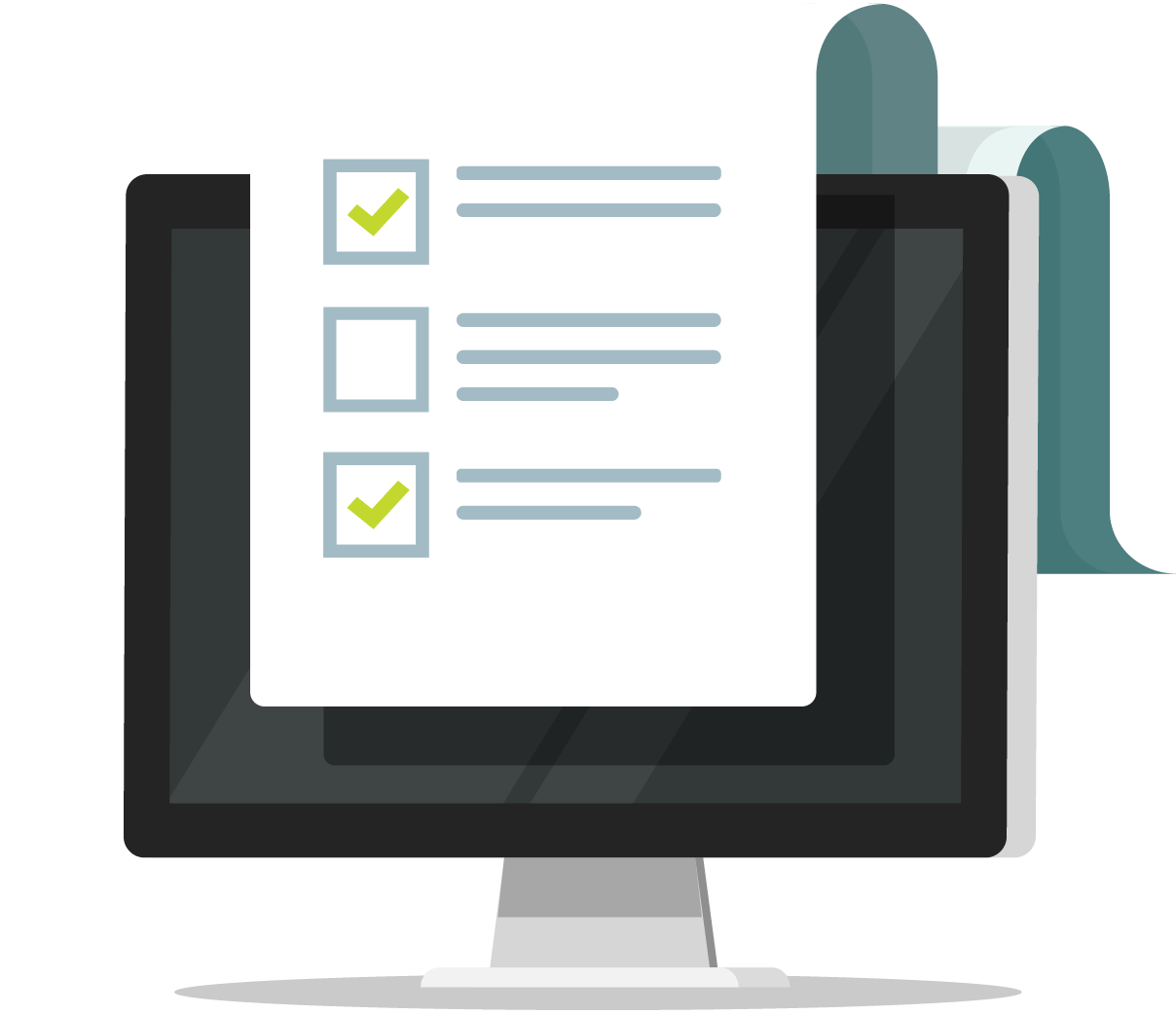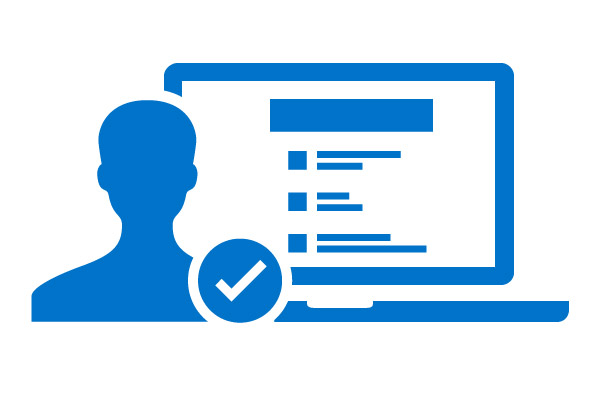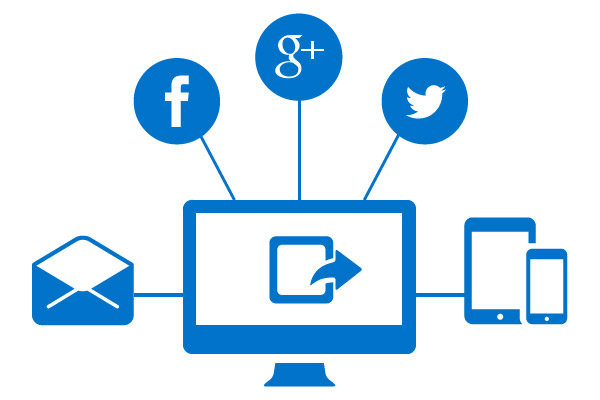A questionnaire is a set of questions typically used for research purposes which can be both qualitative as well as quantitative in nature.
Quantitative questionnaires are created in the form of
closed ended questions, where as, qualitative questionnaires are created in the form of open ended questions. These questions together form the questionnaire which is then typically distributed in the form of an online survey to qualified survey respondents and then analyzed for effective insights. Online questionnaires are the natural evolution to questionnaires, as they are not only easy to create and send, but more importantly - easy to analyse.
Learn more : Questionnaire VS Survey: Is there a Difference?
There could be any number of reasons why you'd need to create a questionnaire and conduct a survey. Maybe you're a teacher and would like to know more about how your class is affecting your students. Perhaps your company is about to release a new product and you'd like to have a better idea of how the market will react. Or, if you're the manager of a restaurant, you should be probably be concerned with how your customers are being treated and how they feel about the service. Whatever your reason is, QuestionPro provides over 300+ ready made questionnaire templates for you to use. These template are great questionnaire examples for any industry. Browse through our vast collection of templates, pick the template of your choice and send them out to your respondents.
Customer Satisfaction Questionnaire Examples and Templates
Customer satisfaction questionnaire templates include a wide variety of popular customer questions that help businesses and nonprofits alike, to gain feedback from their clients and buyers. These templates are created using extensive consultation from experts in the field of customer experience questionnaires, such that they get maximum responses and insights. Use any of these free customer questionnaire templates and start asking questions that get you answers to the most pressing customer satisfaction and experience questions about your organization.
View All Customer Questionnaire Templates

Human Resources Questionnaire Examples and Templates
Employee and human resource questionnaires are designed to derive meaningful insights on your workforce. These questionnaires cover important HR questionnaires such as knowledge management, employee evaluations, employee satisfaction and much more. Employee questionnaires are also critical in ensuring that your work culture serves as a motivation factor for your employee, that their mood and morale are uplifted and they are geared towards contributing towards increased productivity through a winning work cukture.

Market Research Questionnaire Examples and Templates
Market research questionnaire templates enables you to create insightful market research analysis questions. These examples cover important topics in market research such as new product testing questionnaire, conference feedback questionnaire, focus group based research questionnaire, web-based feedback questionnaire and much more. Just pick a template of your choice, make edits as required and send them out out to your research audience.

Demographic / Psychographic Questionnaire Examples and Templates
Demographic questionnaire templates are used for demographic segmentation and census data collection. These examples and template are also used for psychographic profiling of individuals based on lifestyle and choices. Demographic questionnaires cover general shopping habits, life values, leisure time activities, website browsing habits and more!
Creating a questionnaire that effectively gets valuable responses, involves steps that include objective defining, question type selection and response difficulty analysis. Here are some great tips to get you started:
- Review the basic objectives of the study. What are you trying to discover? What actions do you want to take as a result of the questionnaire? This helps you double check the validity of the data collection mechanism. Online questionnaires are just one way of collecting and quantifying perspectives.
- Visualize all of the relevant information items
you would like to have. What will the output report look like? What charts and graphs will be prepared? What information do you need to be assured that action is warranted?
- Rank each topic in items 1 and 2
according to the value of the topic. List the most important topics first. Revisit items 1 and 2 again to make sure the objectives, topics and information you need are appropriate. Remember, you can't solve the problem if you ask the wrong questions.
- How easy or difficult is it for the respondent to provide information
on each topic? If it is difficult, is there another way to obtain the information by asking another question?"
This is probably the most important step. Online questionnaires have to be precise, clear and concise. Due to the nature of the "Web" and the fickleness associated, if your questions are too complicated and are not easy to understand, you will have a high "drop out" rate.
- Create a sequence for the topics that is unbiased.
Make sure that the questions asked first do not bias the results of the next questions. Sometimes providing too much information, or disclosing purpose of the study can create bias.
Once you have a sequence of topics, you can have a basic layout of a questionnaire. It is always prudent to add an "Introductory" text to explain the project and what is required off the respondent. It is also professional to have an ending "Thank You" text as well as information about where to find the results of the questionnaire, when they are published.
- Determine the type of question that is best suited
to answer the question and provide enough robustness to meet analysis requirements. This means do you use open-ended text questions, dichotomous, multiple choice, rank order, scaled, or constant sum (ratio scale) questions. There is a fine line you need to walk here - Generally tougher analysis requirements will lead to more complicated questionnaire design. However, there are a couple of tools available to make life easier:
- Determine the type of question that is best suited
to answer the question and provide enough robustness to meet analysis requirements. This means do you use open-ended text questions, dichotomous, multiple choice, rank order, scaled, or constant sum (ratio scale) questions. There is a fine line you need to walk here - Generally tougher analysis requirements will lead to more complicated questionnaire design. However, there are a couple of tools available to make life easier:
- Page Breaks - Avoid having a huge scrolling questionnaire. Introduce page breaks as necessary. Please also refrain from just having one question per page. This increases the time to complete the questionnaire as well as increases the chances for "drop outs".
- Branching - Use Branching and Skip Logic to make your questionnaires "Smart". Avoid using text like, "If you answered No to Q1 then Answer Q4" - this causes respondent frustration and increases the "drop out" rate. Design the questionnaire using Branching Logic so that the correct questions are automatically routed based on previous responses.
- Write the questions.
You may need to write several questions for each topic, selecting the best one. You might also be better off dividing the questionnaire into multiple sections.
- Sequence the questions so that they are unbiased.
- Repeat all of the steps above to find any major holes. Are the questions really answered? Have someone review it for you.
- Time the length of the questionnaire A questionnaire should take less than five minutes. At three to four questions per minute, you are limited to about 15 questions. One open end text question counts for three multiple choice questions. Most online software tools will record the time taken for the respondents to answer questions.
- Pretest the questionnaire to 20 or more people.Obtain their feedback... in detail. What were they unsure about? Did they have questions? Did they have trouble understanding what you wanted? Did they take a point of view not covered in your answers or question?
- An easy way to do this is to create another questionnaire, with a few "open ended" essay questions along with your main project. Let's call this the "feedback questionnaire".
- Email the "Project" questionnaire to your test group and then email the "feedback" questionnaire also after that.
- In that way, you can have your test group send you comments regarding the functionality as well as usability of your "Project" questionnaire by using you "feedback questionnaire"!
- Revise your online questionnaire incorporating the feedback that you got.
- Send the questionnaire out to all your respondents!
Online questionnaire surveys are a great alternative to expensive mail or telephone surveys. There are a few caveats to online surveys however that you must be aware of. If you are trying to survey a representative sample of the general population, please bear in mind that not everyone is online to answer your questionnaire and in some cases, a physical offline questionnaire or tablet based kiosk may be a better option.
Survey Software Easy to use and accessible for everyone. Design, send and analyze online surveys.
Research Suite A suite of enterprise-grade research tools for market research professionals.
Customer Experience Experiences change the world. Deliver the best with our CX management software.
Employee Experience Create the best employee experience and act on real-time data from end to end.














